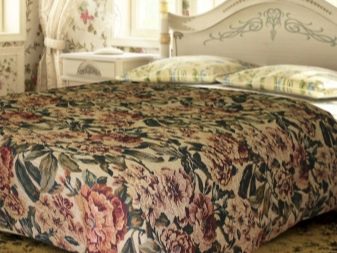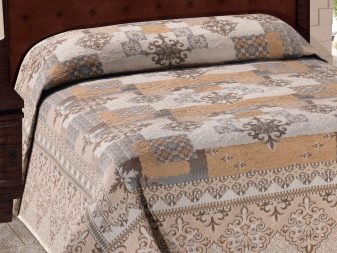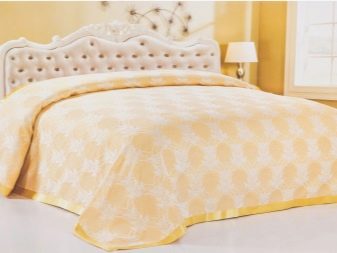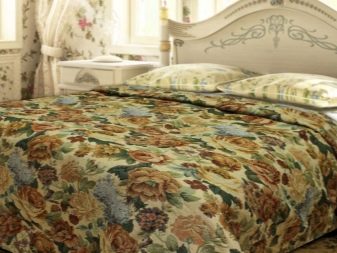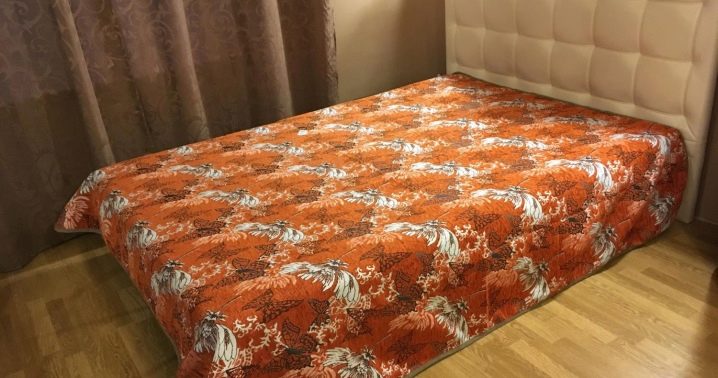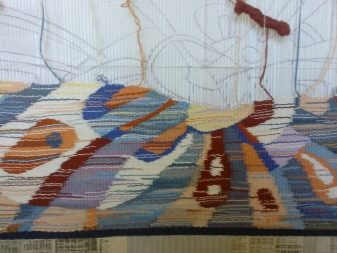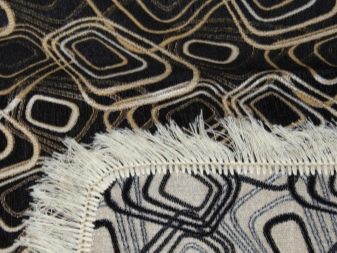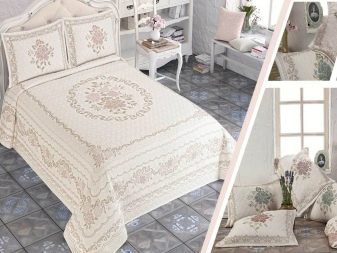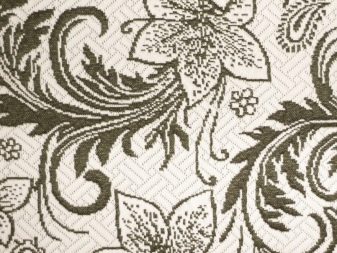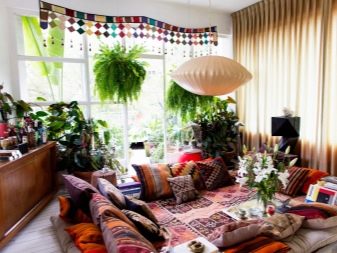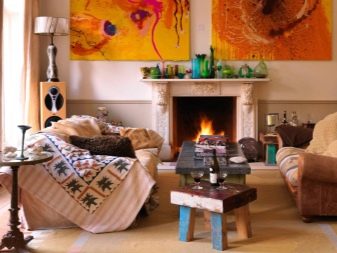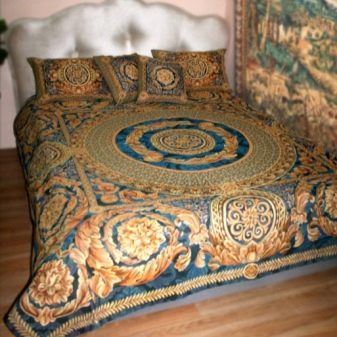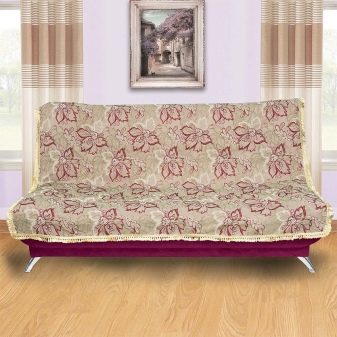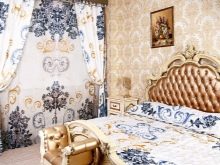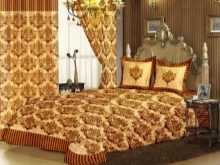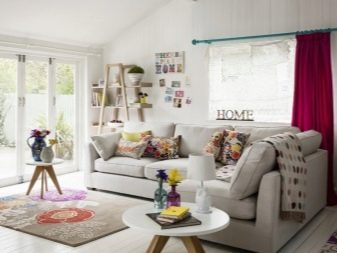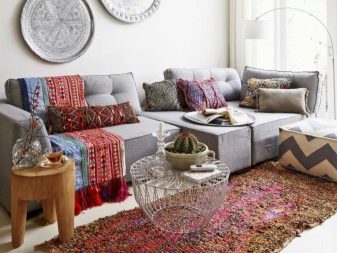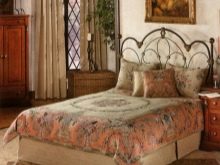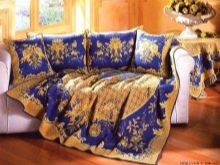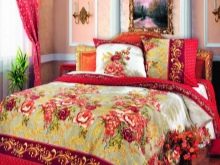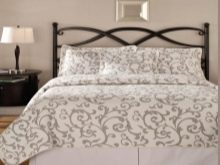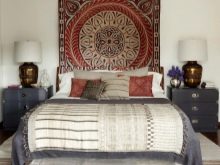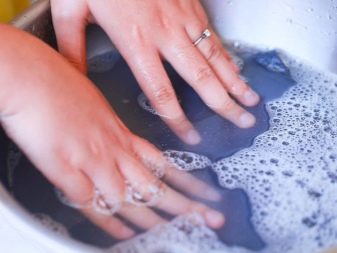Tapestry bedspreads
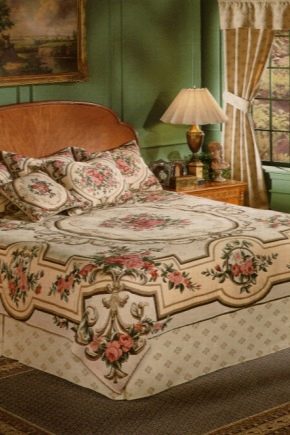
Tapestry bedspreads, once served as a luxury item for the homes of aristocrats and high society, are today a classic piece of furniture decor. At one time, they were carried out for a very long time, because the creation of a pattern took a lot of time, and the manufacturing process itself required a masterful approach.
Over time, manual labor was replaced by automatic, but the canvases have not lost their beauty and sophistication. Modern tapestry covers are considered a sign of delicate taste, but to demonstrate this knowledge of the subtleties of choice and features of capes is needed.
Special features
Tapestry bedspread is a jacquard canvas, made by a special, difficult-to-pattern weave of several netey (from three to four or more).A feature of these capes is the effect of manual work when performed on the machine. And initially colored threads are involved in the work: the canvas is not dyed. Tapestry bedspreads are universal capes made from materials of natural origin with a small percentage of artificial threads.
The main raw material for their production is cotton and polyester.
Due to the minimum percentage of synthetics, the texture of the material is pleasant to the body, the product does not harm the skin, does not provoke the appearance of allergies. Thanks to synthetic yarns, the wear resistance of the covers to mechanical damage, the strength of the weave of the threads and the resistance to deformation as a result of the use and washings increase. Fabric composition may vary to increase wear resistance or thermal properties.
In high-quality models, cotton or wool is added to cotton, the amount of synthetics in them is minimal.
In the budget polyester canvases can be up to 70%. Some brands produce cheap counterparts completely synthetic.
By type of manufacturing tapestry blanket is:
- single layer;
- double layer.
Not only the number of textile layers is different.
Weaving yarn happens:
- one-sided, with a clear pattern on the front side, which involves the use of a blanket only by one side;
- double-sided, in which both sides have a distinct pattern, so the blanket can be laid on both sides.
Functions
Tapestry bedspreads are uniquely versatile. Being classic furniture covers, they are able to perform several tasks. These capes are suitable for different furniture (beds, sofas, chairs, baby cots), they are:
- protect furniture from dust, dirt, moisture, abrasion;
- easily turn into a light blanket, shielding the user from coolness if necessary;
- when folded, they can become optimally stiff and flat mattress in the stroller;
- able to replace the deckchair on the beach;
- are the decor of the furniture, giving it a finished and neat look.
Furniture decorated with such a veil is transformed. Closing bed linen or upholstery, tapestry cape changes the style of the room, diluting it with fresh paint. It can be an independent accent or be part of a set, repeating in the texture of throw pillows,capes on the back of the sofa or chair, armrests.
Merits
Tapestry bedspreads are eco-friendly. They have excellent breathability, hygroscopic, have good hygienic properties.
These products:
- they are distinguished by a variety of size range, which allows you to choose a cape exactly the size of the furniture (bed, sofa, armchair), taking into account its design features;
- do not crumple during operation, always look neat and well-groomed, do not form folds or rugs in the process of application;
- do not need frequent washings, having a rather dense structure of interlacing threads;
- due to the color solutions, they successfully fit into a different type of room, almost always getting into the tone of the available interior items;
- have a rich color palette with colorful hues, allowing you to unobtrusively change the temperature of the room, depending on the color, adding light to it or shading light details of the style;
- thanks to a special impregnation and variegated pattern, practical and do not show minor contamination;
- have a wide range of prices: depending on the size and composition, pattern and texture, tapestry bedspread can be bought to your taste and planned budget.
Minuses
Due to the massive combination of color tapestry blanket requires careful selection of style. It will not be appropriate in the design of modern or minimalism, it is not particularly relevant in the room, where the soft nap carpet is laid on the floor. Compatibility is important today, so it’s worth considering before buying: a wrong choice of bedspread can simplify the overall look of a room.
The tapestry-jacquard bedspread has another drawback: due to the dense interweaving of the threads of the canvas, it is difficult to remove stains resulting from contamination with liquids. In addition, if the canvas has more natural raw materials, when washing at the maximum temperature, it may shrink, which will affect the size and raise the question of buying a new accessory: if the canvas does not completely cover the bed, it looks ugly.
Bonus canvases are quite expensive: in some stores their cost exceeds 10,000 rubles.
Choosing a model on a bed, sofa or chair: what to look for?
Buying a tapestry bedspread is a simple task, however, before that you need to look at the existing interior and decide whether this product is suitable for it.If so, you can safely go to the store with a proven reputation, having a lot of positive customer reviews.
When buying it is worth considering several factors:
- you should not “decorate” the wall with the coverlet: it is old-fashioned and tasteless (only a designer can do it appropriately and stylishly, and here you will have to change pieces of furniture, tying the canvas to a specific element);
- size: it is worthwhile to measure the parameters of the furniture in advance at home (there should be no undercuts, there should be no uncovered sections, the standard parameters of the models are 150x200, 180x200, 190x230, 200x220, 200x240, 250x240 cm);
- such a product is relevant if there is no other tapestry in the design (the abundance of variegation and texture will create the impression of a national dwelling, depriving the room of individuality);
- with a small space of the room, it is worth avoiding the pattern with multicolor: it will reduce the already small area of the room (it is better to rely on the style: frills, piping in the form of a cord, fringe, lace);
- cool tones of the palette are good in moderate volume: abundance and dark colors will quickly get bored and annoy the user;
if the side of the room is north, you should choose a product in the "sun",warm colors: so be able to add light to the room;
- You should not choose a model and color to match the curtains, repeating the texture and style: it will deprive the interior of the features;
- accessories from synthetic tapestry simplify the general background: it is better to choose models from natural raw materials;
- The brown tapestry is practical, but old-fashioned and loads the room with darkness: light and saturated tones with a small set of colors are relevant, preferably on a light basis;
- tapestry velor bedspreads look good in a room where there is a soft nap carpet;
- if the product is bought for a long time, you should pay attention to the two-layer model with a wide edging around the edge (practical, but due to the double density, this cover looks premium);
- moderation of color: it is not necessary to create excessive tension in the room, because each shade has an effect on the human subconscious (you need to choose a range of pastel colors with subtle dark strokes).
Care
Care for tapestry blanket is easy.
To do this, take note of a few simple tips:
- handwashing with delicate movements and without sharp spin is preferable;
- if the product is washed in a typewriter, it is important to choose a gentle mode and low temperature (no more than 30 degrees);
- in the presence of stubborn stains, they are dealt with before washing, using special means, applying them directly to the stain (before this, a test is performed on the corner to check the tissue's response to the washing preparation);
- drying is carried out in a natural way (you can not use heating appliances or iron);
- ironing at the maximum temperature is not allowed (this can melt synthetic fibers);
- some textiles provide for dry cleaning;
- periodically cover must be ventilated outdoors;
to store the product in case of useless is in a ventilated bag or wrapped in a sheet (excluded polyethylene).
How to make a tapestry in the production, see the video:
